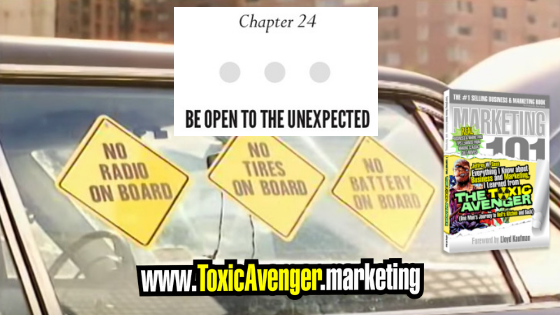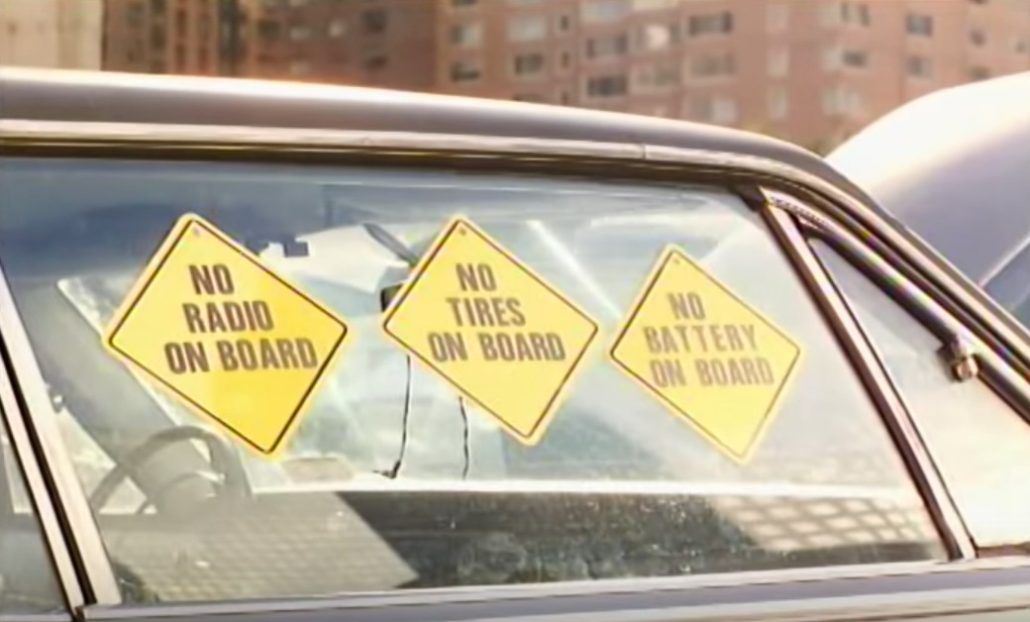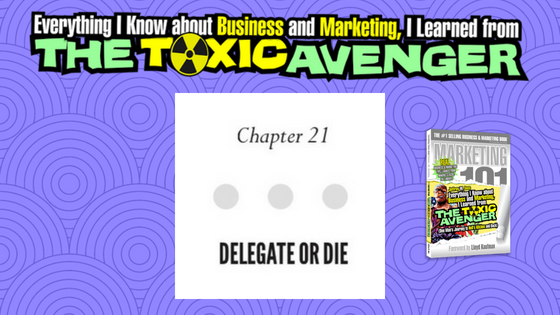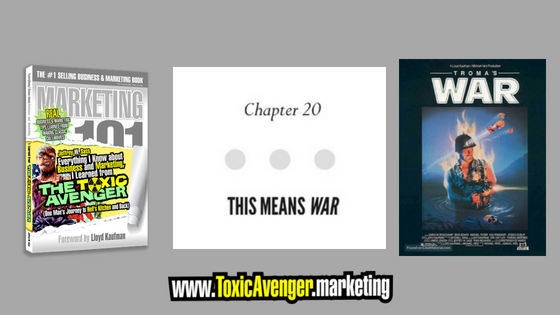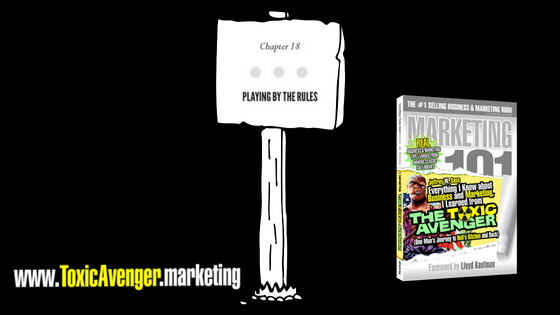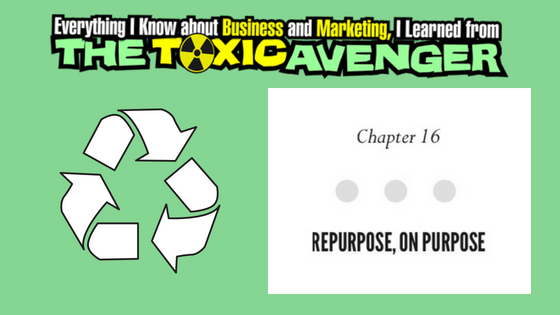Chapter 27: Putting Out Fires (Literally)
Greetings from Tromaville! Here is Chapter 27 of my book, Everything I Know about Business and Marketing, I Learned from THE TOXIC AVENGER. In this chapter, we discuss dealing with “Celebrities” and my heated encounter with legendary producer, Samuel Z. Arkoff (R.I.P.).
If you haven’t done so already, you can read the Foreword by Troma co-founder, Lloyd Kaufman, and the Introduction to the book as well as Chapter 1, 2, 3, 4, 5 and 6, 7 ,8, 9, 10, 11, 12, 13, 14, 15, 16, 17, 18, 19, 20, 21, 22, 23, 24, 25 and 26. You can also see me read a few chapters live, along with Lloyd and Toxie, at Florida Supercon as well as a few chapters I read on Facebook Live. Stay tuned for additional chapters to be published here. If you like what you read and can’t wait for more, please don’t be shy. You can buy the book now on Amazon (and also please don’t be shy about sharing, and reviewing the book when you do read it.) Both Toxie and I greatly appreciate your support! – Jeff Sass
Chapter 27: Putting Out Fires (Literally)
I’ve never been one to be particularly starstruck, mostly because at Satori, in my early twenties, I encountered celebrities on a regular basis as a production assistant and then producer of the Cable TV show Celebrity. It didn’t take long for me to realize that, regardless of their fortune or fame, celebrities were people too. And like any cross-section of the populace, some celebrities were warm and friendly, and some were complete and utter assholes. Most were in-between, just like you and I, having good and bad moods, good and bad days, and generally behaving within the realm of normalcy.
This proved to be good training for me throughout my career. At Troma and beyond, I’ve had the opportunity to work closely with a wide range of high-profile celebrities from William Shatner (while I was in the video game business) to Akon (while I was in the music ringtone business) to 50 Cent (in the. CLUB domain name business). While certainly many celebrities do like to have their ego stroked and appreciate your acknowledging and admiring their work, most of them actually just want to be treated like a regular person and talk with you about regular, mundane, routine stuff.
Except for the assholes. They want to treat you like you are less than them and only want to hear about themselves. Fortunately, in all my years of encountering famous people, I can count the actual A-holes on less than one hand (though a couple of them were pretty bad).
Should you ever have the opportunity to work with celebrities, directly or indirectly, perhaps as spokesperson or endorser of your company or product, remember that while they want to be treated as “talent,” they also want to be treated as a person and not an object.
Troma was interesting because while we didn’t have many big celebrities in our movies (at least they weren’t yet celebrities when they made their Troma debuts), we did have a lot of famous celebrities hang out with us and visit us. Given Troma’s raw and fiercely independent stature in (or perhaps more technically, outside of) the entertainment industry, many stars were “friends of Troma” even if they wouldn’t be caught dead (or playing dead) in one of our films. Some were friends of Lloyd’s going back to his pre-Troma and early Troma days, like Oliver Stone, Roger Corman, Stan Lee, John Voight, Sylvester Stallone, and director John Avildsen (Rocky). In the early days, Lloyd worked on films such as Rocky and The Final Countdown with Kirk Douglas, and made many long-standing friendships through both productions, including a close friendship with Kirk and the Douglas family.
It was not uncommon for some of the abovenamed stars to stop by the Troma building in NY or visit the Troma suite at Cannes or The American Film Market in Los Angeles. This was especially true in the early ’90s when The Toxic Crusaders, the Saturday-morning cartoon spin-off of The Toxic Avenger was momentarily a hot property. During The Toxic Crusaders’ fifteen minutes of fame, we even had stars like Faye Dunaway coming to see us at AFM. It turned out Dunaway’s then nine-year-old son was a big fan of The Toxic Crusaders, and she wanted to get her hands on some of the more exclusive Toxic Crusaders toys and products. She even expressed interest in appearing in the Toxic Crusaders movie we were then negotiating with a major studio. Alas, our fifteen minutes expired before we were able to conclude the “big budget” version of The Toxic Crusaders.
As I said, I was not particularly starstruck in those days, but there was one fairly regular visitor to our American Film Market suite that I was always excited to see, and that was Sam Arkoff. Samuel Z. Arkoff was a true legend in the industry and considered by many to be the godfather of B-movies. In fact, in a memorial he wrote after Sam’s death in 2001, famed film critic Roger Ebert called Sam, “the godfather of the beach party and teenage werewolf movies.” According to Ebert, “It was said that Sam Arkoff produced more films by Hollywood’s best directors and brightest stars than anyone else—and did it the hard way, before they were the best or the brightest. AIP films were directed by Francis Ford Coppola, Martin Scorsese, Brian de Palma, and Peter Bogdanovich, and featured early performances by such unknowns as Jack Nicholson, Robert De Niro, Charles Bronson, Barbara Hershey, Nick Nolte, and Peter Fonda—as well as making teen immortals out of Frankie Avalon and Annette Funicello.” One of Arkoff’s most prolific directors and partners was Roger Corman, who is also credited with giving dozens of Hollywood’s finest their start, including James Cameron and producer Gale Ann Hurd (The Terminator, TV’s The Walking Dead).
So, clearly Sam and Lloyd were kindred spirits and got along great, and Sam genuinely admired Lloyd and Troma. When he visited us, he always had great stories to share, and, in true Hollywood mogul style, he always had his signature cigar in hand and mouth. One year Sam stopped by our suite at the American Film Market. I was manning the office myself at the time and had a handful of foreign buyers I was pitching to. Sam said hello and asked if he could just sit and rest for a while. He was in his seventies at the time and wanted to get away from all the commotion in the busy market’s hallways and rest a few minutes.
“Of course, Sam, you are always welcome in Tromaville. Make yourself at home!”
And he did. This was back in the day when you could still smoke indoors. Sam plopped down on our couch, grunted a sigh of relief and proceeded to light up his big, fat stogie. I went back to pitching our movies to the other visitors in the suite. After a few minutes, I smelled something burning and turned around to find Sam, sound asleep, snoring peacefully, cigar in mouth, while a big burning ash from his cigar had fallen onto his lapel and was now burning a smoldering hole in his expensive designer suit.
“Sam!” I cried out. “Mr. Arkoff!”
He snored.
His lapel was smoking.
I went over, and, trying not to disturb the lazing legend I brushed the burning ash off his now burnt lapel, and took the still-lit cigar gently from the mouth of the somnolent studio head. Arkoff awoke with a start, grabbed his cigar from me and placed it back in its home between his teeth, closed his eyes, and resumed his nap. Fire hazard avoided, I went back to my startled, and now truly Tromatized buyers.
Yes, in business you always need to be prepared to put out fires. Literally and figuratively.
•••
That’s Chapter 27 – In business, you must always be prepared to put out fires – literally and figuratively! Stay tuned for Chapter 28: “Sleeping on the Job” which addresses some of the more interesting sacrifices you may have to make in the name of your startup!
The book in previous posts:
Foreword, by Lloyd Kaufman
Introduction: Lights, Camera, Action!
Chapter 1: Welcome to Tromaville!
Chapter 2: The Troma Building
Chapter 3: Meet the Moguls
Chapter 4: Trailer Trash
Chapters 5 and 6: Working FREE-lance & Becoming a Full-time Tromite
Chapter 7: Branding Begins on the Ground Floor
Chapter 8: The Power of We
Chapter 9: Old Yeller (and Be Your Brand)
Chapter 10: Find Something to Believe In
Chapter 11: Show Up!
Chapter 12: Sink or Swim!
Chapter 13: Embrace your Vision and Culture!
Chapter 14: Strategic Partners – Burn Houses, Not Bridges
Chapter 15: If You Don’t Want to Swallow a Frog, Start with a Stunt
Chapter 16: Repurpose, On Purpose!
Chapter 17: Always Salute the Schwag!
Chapter 18: Playing by the Rules
Chapter 19: Fix it, or Forget it… Fast!
Chapter 20: This Means WAR!
Chapter 21: Delegate or Die!
Chapter 22: Location, Location, Location
Chapter 23: Everyone is Expendable (Especially if you Wear a Mask!)
Chapter 24: Be Open to the Unexpected
Chapter 25: Influencing the Influencers
Chapter 26: Yes, we Cannes!




